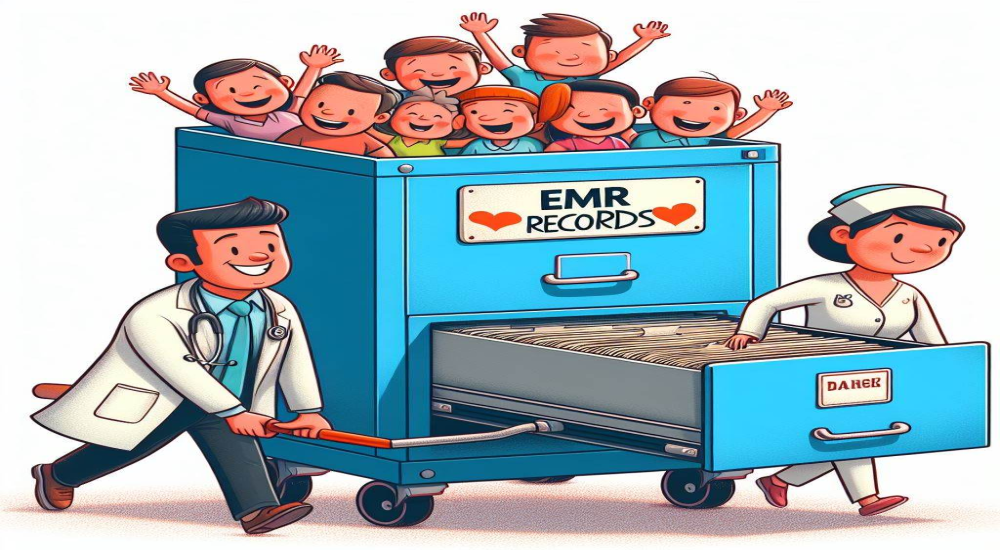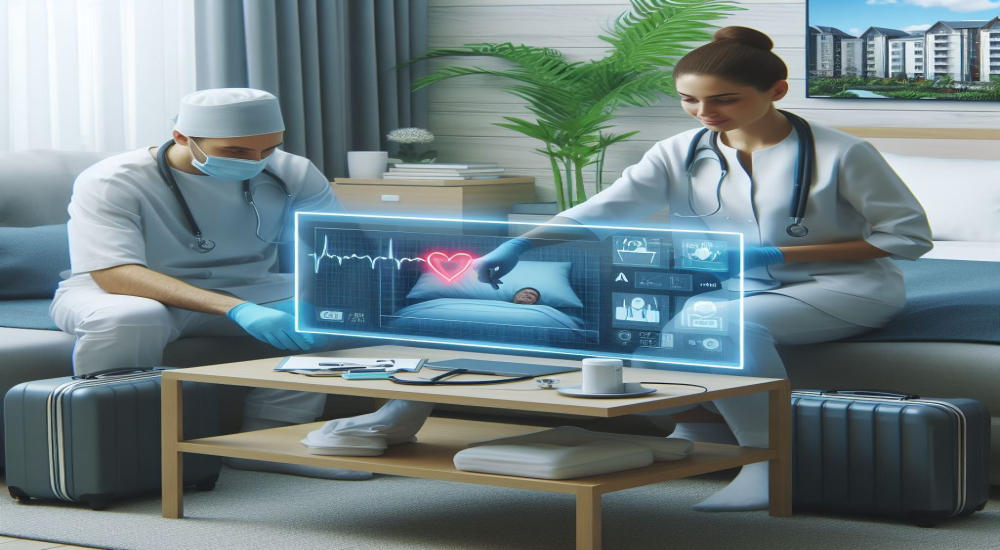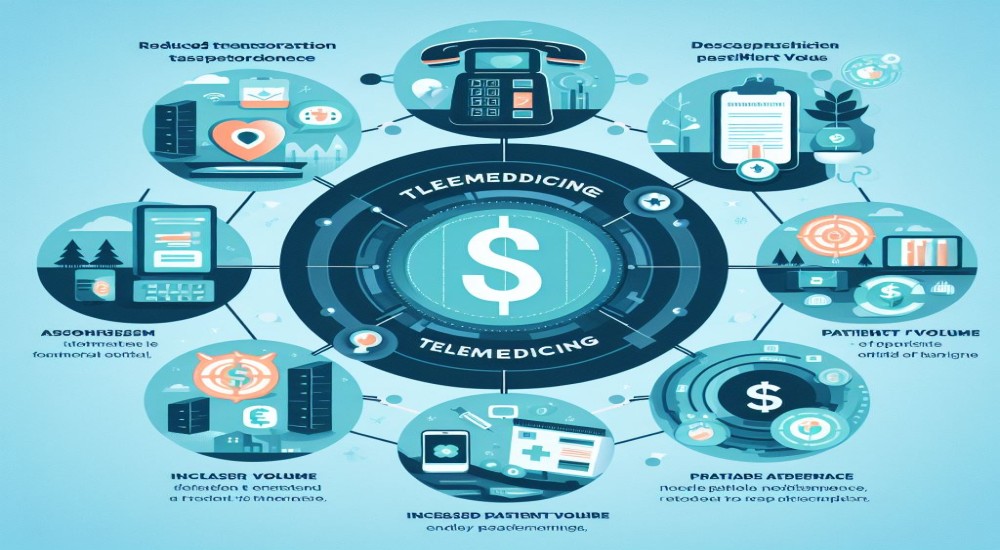Telemedicine: A Thousand-Word Odyssey of Health at a Distance
In the realm of healthcare, where advancements are as vital as the air we breathe, one innovation stands tall, bridging gaps and bringing care closer to those who need it: telemedicine. This revolutionary concept of remote medical consultation and treatment has traversed a remarkable journey, a journey marked by pivotal moments that have shaped its evolution and redefined the landscape of modern healthcare. Join us as we delve deeper into the annals of history to explore the rich tapestry of telemedicine's past, present, and future.
The Early Beginnings:
Telemedicine's genesis can be traced back to the early 20th century, a time when radio and telephone communication began to shrink the vast distances separating humanity. In 1924, Hugo Gernsback, a visionary ahead of his time, penned the concept of the "teledactyl," a device that would enable doctors to remotely examine and treat patients. Though Gernsback's invention remained a figment of imagination, it laid the groundwork for future explorations in telemedicine.
Telemedicine Takes Flight:
The 1950s witnessed the dawn of practical telemedicine applications as radiologic images were transmitted via telephone lines for interpretation by specialists in distant locations. This marked the advent of tele-radiology, a field that played a crucial role in extending healthcare services to remote and underserved communities. The ability to transmit images across distances heralded a new era of medical collaboration, setting the stage for future innovations.
Space Age Technology:
The 1960s, an era defined by the space race, provided an unexpected impetus to telemedicine. NASA's quest to monitor the health of astronauts in space led to the development of technologies capable of transmitting vital signs and medical data from spacecraft to ground control stations. This feat of ingenuity not only safeguarded the well-being of astronauts but also laid the groundwork for remote patient monitoring systems used in healthcare settings today.
The Rise of Video Teleconferencing:
The 1970s ushered in a new era of telemedicine with the advent of video teleconferencing. Researchers and healthcare providers began experimenting with real-time video consultations, enabling remote interaction between patients and physicians. This breakthrough allowed specialists to diagnose and treat patients separated by vast distances, reducing the need for costly and time-consuming travel. Video teleconferencing became the cornerstone of modern telemedicine, fostering collaboration and improving access to specialized care.
Internet Age Revolution:
The dawn of the internet age in the 1990s propelled telemedicine into the mainstream. With the widespread adoption of high-speed internet connections, healthcare providers gained unprecedented access to a plethora of digital tools and platforms. Telemedicine flourished in this digital landscape, offering a wide range of services, including virtual consultations, remote diagnostics, and even surgical procedures. The internet facilitated the exchange of medical information and fostered collaboration among healthcare professionals, leading to improved patient care and outcomes.
Mobile Health:
The 21st century witnessed the convergence of telemedicine and mobile technology, giving rise to the era of mobile health or "mHealth." The proliferation of smartphones and mobile apps revolutionized healthcare delivery, empowering patients to access medical services and information from the palm of their hand. mHealth apps enabled patients to consult with healthcare providers, monitor their health metrics, and access medical records anytime, anywhere. These mobile solutions became indispensable tools for managing chronic conditions, promoting wellness, and delivering timely interventions in emergency situations.
Key Figures and Hurdles:
Throughout telemedicine's evolution, several key figures have played instrumental roles in its development. Among them, Dr. Kenneth Bird stands out for his pioneering work in tele-radiology during the 1950s. Dr. Bird faced numerous challenges, including technological limitations and skepticism from the medical community, but his perseverance and vision laid the foundation for modern telemedicine practices.
In the realm of space medicine, Dr. Charles Berry, NASA's first chief medical officer, was a driving force behind the development of telemedicine technologies for space missions. Dr. Berry encountered obstacles such as limited bandwidth and reliability issues in transmitting medical data from space, but his innovative solutions paved the way for telemedicine's integration into space exploration programs.
During the internet age, Dr. Jay Sanders emerged as a trailblazer in telemedicine research and advocacy. Dr. Sanders founded the American Telemedicine Association in 1993, advocating for policy changes and reimbursement mechanisms to support telemedicine initiatives. Despite facing resistance from traditional healthcare systems and regulatory hurdles, Dr. Sanders's advocacy efforts helped propel telemedicine into the mainstream.
In the face of the COVID-19 pandemic, healthcare providers and policymakers worldwide grappled with the challenge of rapidly scaling up telemedicine services to meet the surge in demand. Regulatory barriers, privacy concerns, and disparities in access to technology posed significant obstacles to telemedicine adoption. However, concerted efforts by healthcare organizations, government agencies, and technology companies helped overcome these hurdles, enabling millions of patients to access care remotely during these unprecedented times.
Telemedicine Today and Beyond:
In recent years, telemedicine has experienced unprecedented growth, driven by advancements in technology and changes in healthcare delivery models. The global COVID-19 pandemic served as a catalyst for the rapid adoption of telemedicine, as healthcare systems worldwide sought to ensure continuity of care while minimizing the risk of viral transmission. Virtual consultations, remote monitoring, and telehealth platforms emerged as essential components of modern healthcare, offering safe and convenient alternatives to traditional in-person visits.
Looking ahead, the future of telemedicine holds boundless promise. Advancements in artificial intelligence, wearable devices, and virtual reality are poised to further enhance the capabilities of remote healthcare delivery. From personalized treatment plans to immersive telepresence experiences, the possibilities are endless. As telemedicine continues to evolve, its potential to improve access to care, reduce healthcare costs, and empower patients will undoubtedly shape the future of medicine.
Looking ahead, the future of telemedicine holds boundless promise. Advancements in artificial intelligence, wearable devices, and virtual reality are poised to further enhance the capabilities of remote healthcare delivery. From personalized treatment plans to immersive telepresence experiences, the possibilities are endless. As telemedicine continues to evolve, its potential to improve access to care, reduce healthcare costs, and empower patients will undoubtedly shape the future of medicine.

















































